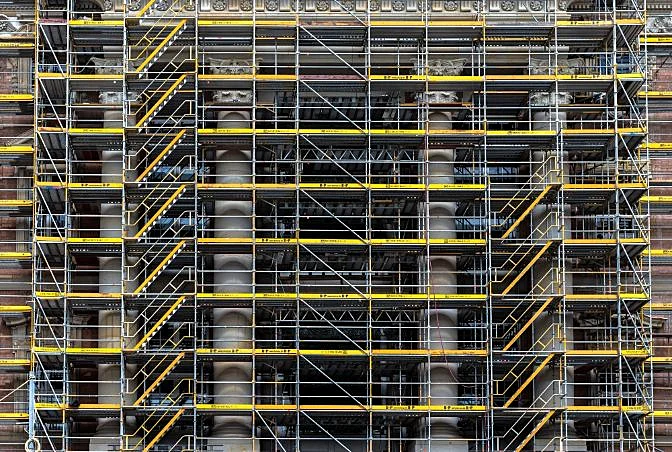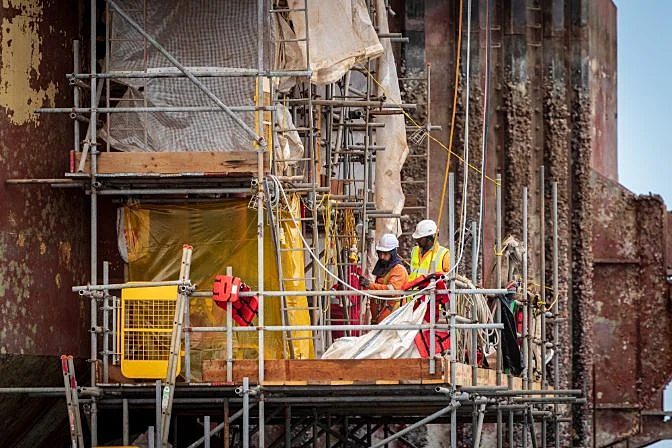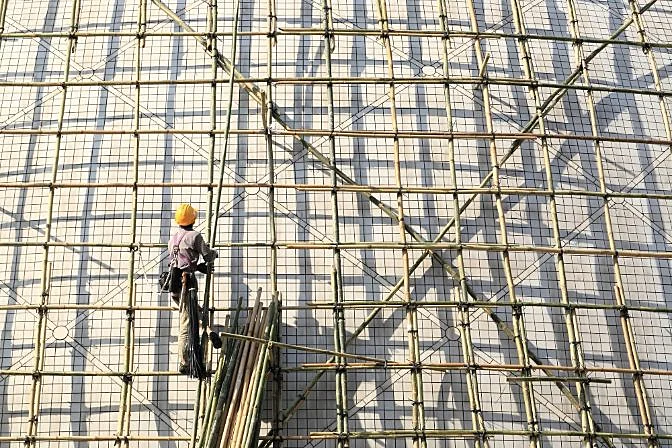What Is Scaffolding?
What Is Scaffolding?
Scaffolding is a temporary structure commonly constructed from metal poles and wooden planks, designed to support workers who need to perform tasks at height. It provides a stable platform for construction workers, inspectors, cleaners, and others who must work in elevated or hard-to-reach areas.
[Note: This article focuses on scaffolding as it applies to industrial and construction settings. For information about scaffolding in an educational context, we recommend visiting Grand Canyon University's resource.]
The history of scaffolding stretches back thousands of years, with evidence suggesting its use during the Stone Age. In fact, there are indications that early humans used primitive scaffolds over 17,000 years ago while creating the famous cave paintings at Lascaux in France.
Scaffolding has been utilized across various ancient civilizations, including in China and Egypt, where simple structures made from wood were tied together with ropes. These early forms laid the foundation for the more advanced scaffolding systems we see today.

In modern times, scaffolding has evolved significantly, now available in multiple designs and made from a variety of materials such as steel, aluminum, and even composite structures. This evolution has improved both safety and efficiency in construction and maintenance projects.
This article will explore how scaffolding is currently used, its different types and components, how it can be assembled, and the considerations between renting versus purchasing. We’ll also examine how emerging technologies like drones are helping reduce reliance on traditional scaffolding in many industries.
What Is Scaffolding?
A scaffold, also known as scaffolding or staging, is a temporary structure that allows workers to stand on a stable platform when working at height or in difficult-to-access locations. It is widely used in the construction, maintenance, and repair of buildings, bridges, and other man-made structures by supporting workers and their equipment.

The Benefits of Scaffolding
For thousands of years, scaffolding has remained a key tool in construction and maintenance due to its effectiveness. Today, it continues to offer numerous advantages:
- Access: Scaffolding provides stable access to nearly any part of a structure, making it ideal for complex or high-level work.
- Balance: Workers gain a firm footing, allowing them to maintain balance in various positions while performing tasks.
- Easy Assembly: Scaffolding is relatively straightforward to set up and dismantle, saving time and labor.
- Durability: Most scaffolds are built to last, whether they're made from wood or steel.
- Safety: Scaffolding offers a secure platform, though the ultimate goal is to minimize the need for working at height. In the final section, we'll discuss how drones are helping inspectors reduce this risk.
- Efficiency: Scaffolding can act as a bridge, reducing the distance workers must travel on a job site.
The Dangers of Working on Scaffolding
Despite its benefits, working on scaffolding carries inherent risks. According to OSHA (the U.S. Occupational Safety and Health Administration):
- Scaffold-related accidents result in approximately 4,500 injuries and 60 deaths annually in the U.S.
- Falls from scaffolding account for about 25% of all workplace fatalities.
- Over 72% of injuries occur due to failing planking, slipping, or being struck by falling objects.
- One of the most common violations is inadequate fall protection training.
These numbers reflect only the U.S., but similar incidents occur globally, highlighting the importance of proper training, maintenance, and safety protocols when working on scaffolding.

Common dangers include faulty structures, falling objects, adverse weather conditions, lack of training, and poor construction practices. Ensuring that scaffolding is properly maintained and used according to safety guidelines is crucial for preventing accidents.
Uses of Scaffolding
Scaffolding is used in a wide range of applications today, including:
- Cleaning: Used to access windows and other high areas on skyscrapers.
- Construction: Provides a stable platform for workers to build structures at height.
- Industrial Inspections: Allows inspectors to reach otherwise inaccessible areas for visual or non-destructive testing.
- Maintenance: Enables workers to access and repair defects found during inspections.
- Other Uses: Includes art installations, concert stages, exhibition stands, observation towers, and more.
Alternatives to Scaffolding: Using Inspection Drones
While scaffolding remains a valuable tool, it comes with risks and logistical challenges. Alternatives like rope access and drone technology are increasingly being used to reduce the need for scaffolding.
For industrial inspections, drones are proving to be a safer and more efficient alternative. Drones like Flyability’s Elios 3 can access hard-to-reach areas, collect high-quality data, and eliminate the need for workers to climb scaffolding. They can also carry specialized sensors for thickness gauges, radiation detection, and more.
Here are some key reasons why inspectors are turning to drones:
- Safety: Drones allow inspectors to collect data remotely, reducing exposure to dangerous heights.
- Cost Savings: Reducing the need for scaffolding can save companies significant money on setup and removal costs.
- Reduced Downtime: Drones can inspect structures faster, minimizing project delays.
- Speed: Drones can gather visual data quickly, improving inspection efficiency.
As technology advances, the role of drones in reducing the need for scaffolding is becoming more prominent, offering a smarter, safer, and more cost-effective solution for many industries.
Galvanized steel refers to the ordinary carbon construction steel after galvanized processing can effectively prevent steel corrosion and rust so as to prolong the service life of steel, including galvanized galvanized and hot dip galvanized. Generally used for building exterior walls, such as glass curtain wall, marble curtain wall, aluminum curtain wall to do columns and stress materials, or used for outdoor telecommunications tower, highway and other open-air construction steel known as galvanized steel, which galvanized galvanized and hot dip galvanized.
Galvanized steel Coil , Galvanized Steel Plate , Galvanised Steel Sheet
Shandong Longhao Steel Group Co., Ltd. , https://www.longhaosteels.com
